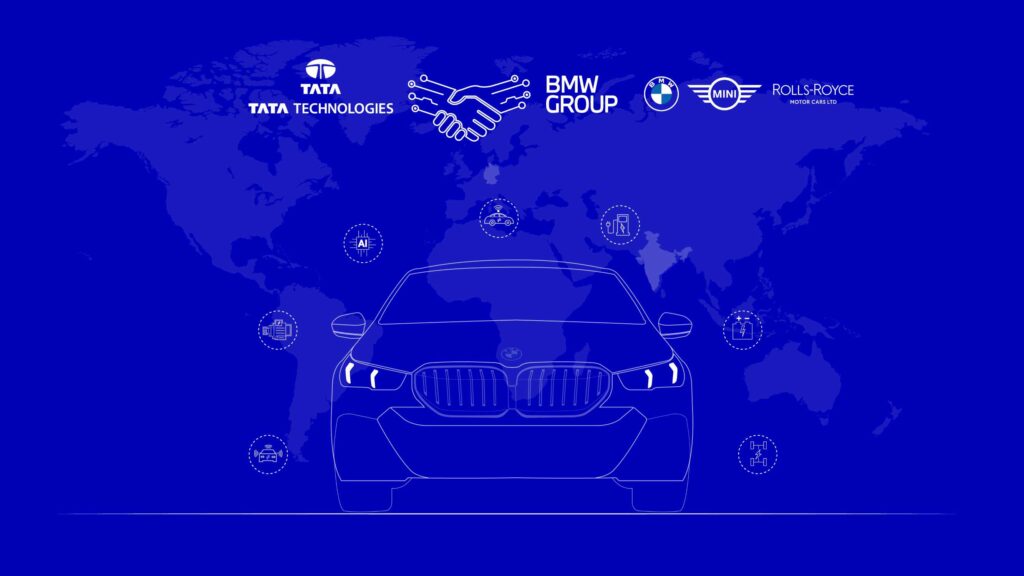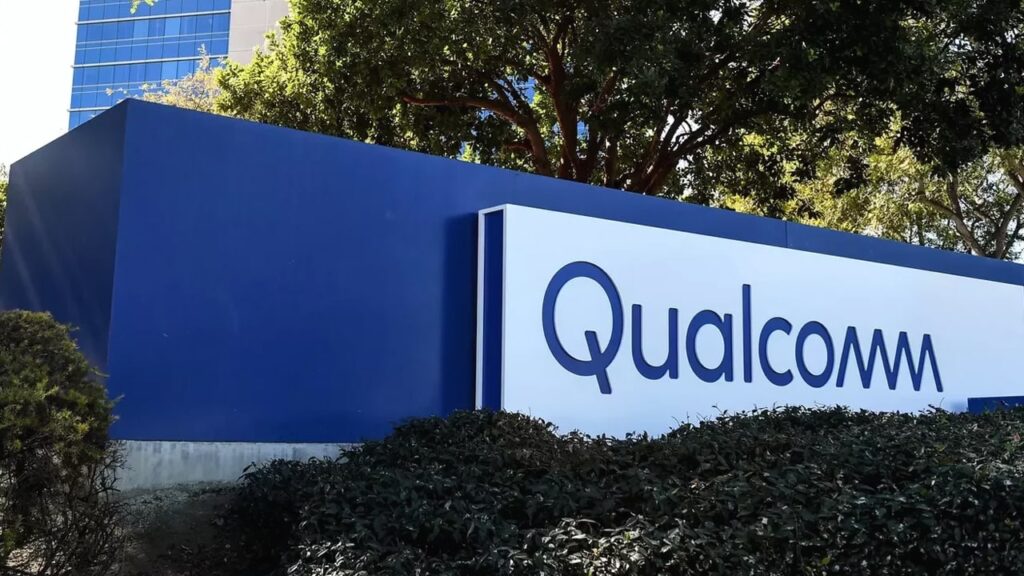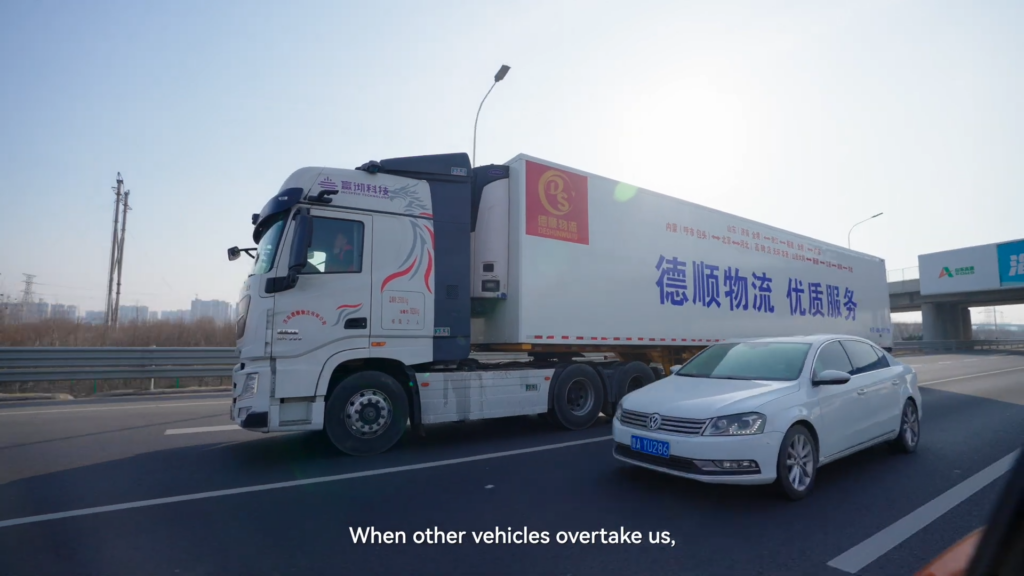
Vueron Newsletter
No. 104
2024.04.05
| Germany’s BMW, India’s Tata Tech to jointly develop auto software | ||
| TIER IV selected for government’s new SBIR initiatives: Establishing safety assessment processes for Level 4 autonomous driving | ||
| Qualcomm lands autonomous driving projects with Toyota and FAW’s Hongqi | ||
| Inceptio Autonomous Driving System Increasingly Adopted by Cold-chain Logistics Providers Across China to Improve Cost Savings and Efficiency Gains |
1. Germany’s BMW, India’s Tata Tech to jointly develop auto software
- BMW Group and Tata Technologies are forming a joint venture to develop automotive software for BMW.
- India serves as a software development hub for global automakers and auto parts manufacturers.
- This venture aims to develop software for automated driving and dashboard systems, among other features.
- The partnership marks the first collaboration between BMW and Tata Technologies, with each holding a 50% stake in the new company.
- The joint venture will be based in Chennai, Bengaluru, and Pune and will start with 100 employees.
- Tata Technologies, a subsidiary of Tata Motors, provides engineering and technology services to various industries including automotive, aerospace, and heavy machinery.
- The announcement of the joint venture caused Tata Technologies’ shares to rise by over 7%, although they later trimmed some gains.
- Tata Technologies went public in November the previous year, becoming the first Tata Group company to do so in nearly two decades, and its shares have more than doubled from its listing price.

The joint venture signifies a strategic move for both BMW and Tata Technologies to leverage each other’s expertise and resources in software development. Tata Technologies’ successful IPO and subsequent share performance indicate investor confidence in the company’s growth prospects and its ability to capitalize on partnerships like this one.
2.TIER IV selected for government’s new SBIR initiatives: Establishing safety assessment processes for Level 4 autonomous driving
- TIER IV, known for its open-source autonomous driving technology, has been selected for a project aimed at demonstrating autonomous driving (AD) technology for regional public transportation.
- The project is part of the SBIR phase 3 funding managed by the Ministry of Land, Infrastructure, Transport and Tourism (MLIT) in Japan.
- TIER IV forms a consortium with key companies and institutions, including BOLDLY, Advanced Smart Mobility, Kanagawa Institute of Technology, and the National Traffic Safety and Environment Laboratory.
- The consortium’s grant ceiling is approximately 7.7 billion yen (approximately 50 million US dollars) over a four-year period from fiscal year 2024 to fiscal year 2027.
- The Japanese government aims to establish AD services to address sustainability issues in regional public transportation.
- The consortium, led by TIER IV, will work on establishing safety assessment processes for AD systems and rolling out AD services, leveraging past government projects and collective expertise.
- TIER IV and consortium members will build an integrated DevOps framework to support Level 4 AD certification, including defining operational design domains, deriving risk scenarios, establishing safety assessment methods, and creating workflows for manuals ensuring safe operations of AD systems.
- Additionally, AD packages tailored for regional stakeholders will be developed, facilitating the implementation of AD services within their communities, including vehicles compatible with Level 4 regulations, safety assessment methods, fleet management systems, integration and adaptation manuals, and utility tools.
- These efforts aim to contribute to the government’s goal of deploying autonomous vehicles in over 100 cities by 2027, addressing challenges such as driver shortages and other issues facing regional public transportation.
- The Japanese government’s SBIR program provides subsidies for large-scale technology demonstrations (phase 3) conducted by startups and other organizations, aiming to connect research and development to the implementation of advanced technologies in society.

The selection of TIER IV for this project highlights the recognition of its expertise in autonomous driving technology, particularly in the context of regional public transportation. The alignment of this project with the Japanese government’s goals emphasizes the importance of advanced technologies like autonomous driving in addressing societal and environmental challenges, such as sustainability and transportation efficiency.
3. Xiaomi Unveils Revolutionary SU7 Electric Vehicle Equipped with Hesai High-Performance Lidar
- Xiaomi officially launches its first mass-produced electric vehicle, the Xiaomi SU7, in Beijing, marking its entry into the electric vehicle market.
- The SU7 Pro and Max versions feature Hesai’s AT128 long-range lidar, highlighting advancements in intelligent driving technology.
- Over 88,898 reservations were made within the first day of release, with deliveries set to begin in April and May for the Pro and Max versions, respectively.
- The SU7’s design incorporates a unique “pebble” aesthetic, with the AT128 lidar integrated in a sleek “watchtower style” on the roof, enhancing both elegance and aerodynamic performance.
- Xiaomi’s intelligent driving technology includes advanced high-resolution perception, offering a human-like driving experience by converting images directly into driving trajectories.
- The Pro and Max versions are equipped with Xiaomi Pilot Max intelligent driving solution, powered by NVIDIA DRIVE Orin computing platform and Hesai’s AT128 lidar, enhancing perception reliability.
- Hesai’s AT128 lidar features 128 independent VCSEL lasers, providing rich high-quality 3D scanning for advanced intelligent driving systems.
- Hesai Technology, a leader in the lidar industry, surpassed 300,000 units delivered in 2023, supporting Xiaomi’s venture into the automotive market.
- Xiaomi and Hesai plan to deepen their collaboration, focusing on advancing intelligent driving technology and delivering safer, more enjoyable travel experiences worldwide.

Xiaomi’s entry into the electric vehicle market with the SU7 demonstrates its ambition to diversify its product offerings and expand its presence in the technology-driven automotive sector. Xiaomi’s commitment to a “human-vehicle-home ecosystem” strategy indicates a holistic approach towards integrating technology into various aspects of users’ lives, beyond just transportation.
4. Qualcomm lands autonomous driving projects with Toyota and FAW’s Hongqi
- Qualcomm has secured projects with Toyota and FAW Group’s Hongqi for its Snapdragon Ride autonomous driving chip, with discussions ongoing with other Chinese car manufacturers.
- Mass production of Qualcomm’s autonomous driving chip may begin by the end of 2022, while global automakers like Toyota might not see progress until 2025.
- Nvidia dominates the high-end autonomous driving chip market with its Orin X chip, while Chinese providers like Horizon Robotics and Mobileye focus on the low- to mid-end market.
- Qualcomm’s Ride chip competes in the mid-tier market, offering scalability and potential for up to 2,000 TOPS in AI computing power, positioned between Nvidia and Horizon Robotics in terms of price.
- Qualcomm, known for its intelligent cockpit chips, has seen significant growth in the automotive sector, with revenue increasing by 31.1% year-on-year in Q4 2023.
- Qualcomm’s venture into autonomous driving chips started with its Ride chip in 2021, gaining traction with the second-generation SA8650 chip in 2022, and showcased at CES 2024 with DJI Automotive.
- Qualcomm’s expansion into autonomous driving chips strengthens its position in the market, potentially disrupting it with flexible business models, performance, and pricing strategies.
- Qualcomm’s Snapdragon Ride Flex, expected for mass production by 2025, aims to compete directly with Nvidia’s next-generation Thor, offering mixed-criticality workloads for digital cockpit, ADAS, and automated driving capabilities.
- Despite strong demand for cost reduction, car manufacturers prioritize cost-effective chips, necessitating Qualcomm to swiftly adapt its chip platforms to seize market opportunities.

The competition between Qualcomm, Nvidia, and Chinese providers underscores the fierce competition in the autonomous driving chip market, driven by advancements in AI computing power and cost-effectiveness. Qualcomm’s approach of offering scalable solutions and flexible business models, combined with its strong track record in the automotive sector, positions it as a formidable player in the evolving landscape of autonomous driving technology.
5. Inceptio Autonomous Driving System Increasingly Adopted by Cold-chain Logistics Providers Across China to Improve Cost Savings and Efficiency Gains
- Inceptio Technology, a leading developer of autonomous driving technologies for heavy-duty trucks in China, highlights how its solutions are being adopted by cold-chain logistics providers to enhance cost savings and efficiency gains on long-haul delivery routes.
- Shandong Deshun Cold Chain Logistics, an SME with over 100 trucks, has deployed Inceptio’s Autonomous Driving System across multiple routes since August 2023, including 3 6X4 heavy-duty trucks equipped with the system.
- Lianfu Yu, CEO of Deshun Logistics, praised the Inceptio driving experience, emphasizing reduced fatigue and improved safety due to the autonomous driving technology.
- The Inceptio system automatically handles lane changes and avoids other vehicles, making sound decisions even on busy roads.
- Safety is a top priority for Deshun Logistics, with Inceptio trucks contributing to reduced accidents and insurance premiums.
- The Inceptio system enables Deshun Logistics to operate long-distance routes with only one driver, significantly reducing operational costs including fuel consumption, leading to nearly halved annual operating costs per truck.
- Some of the cost savings are passed on to drivers, increasing their incomes and improving overall fleet performance.
- Inceptio’s founder and CEO, Julian Ma, expresses pride in the safety and efficiency improvements provided by Inceptio trucks, highlighting the benefits for logistics companies of all sizes in enhancing on-time performance and reducing costs.

The adoption of autonomous driving technology in the logistics industry, particularly in sectors like cold-chain logistics, demonstrates the potential for such solutions to revolutionize traditional operations, offering significant benefits in terms of safety, efficiency, and cost savings. Beyond safety and operational benefits, the cost-saving aspects of autonomous driving technology, including reduced fuel consumption and insurance premiums, make it an attractive investment for logistics companies seeking to optimize their operations and improve their bottom line.
*Contents above are the opinion of ChatGPT, not an individual nor company

